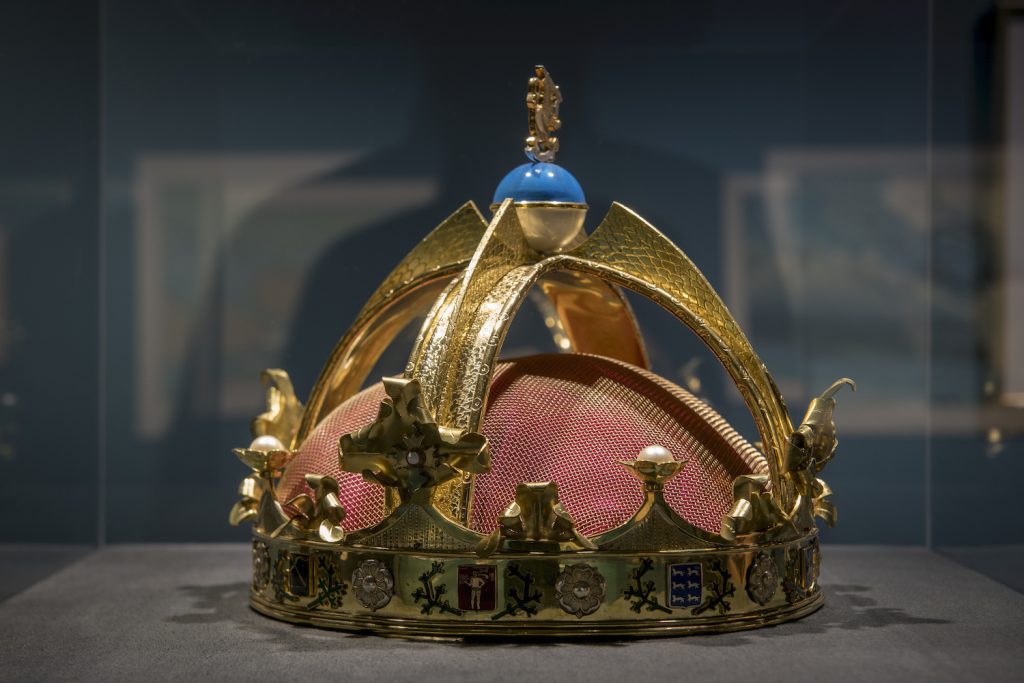
The crown of the King of Finland
The exhibition Olli and Bucklan – the Life and Art of the Ehrströms at Serlachius Museum Gustaf showcases a crown designed for the King of Finland.
In the newly independent country of Finland, a discussion of the future form of government ensued. The idea of becoming a kingdom won over republic, so in October 1918 Prince Friedrich Karl of Hesse (Frederick Charles) was chosen a king of Finland. The future king and his court needed external identification. Naturally, a renowned multitask and always excitable renaissance person, Eric O. W. Ehrström was also included in the design process.
The king’s crown was in the core of the project. It does not have a direct paragon among the crowns of other countries; on one hand it is traditional and on the other hand, a result of a personal design process. In September 1918, Ehrström drew two, only slightly variating sketches for it. In the final version, four traditional and decorative pointed half-arches with leaf motifs rise from the circlet. Between them are cup-shaped inserts for pearls, in which Ehrström has intended, according to his notes, to insert large freshwater pearls from Karelia. On the circlet, heraldic roses to be made of platinum and the coats of arms of Finland’s historical provinces to be realized in painted enamel are alternating. A solution where coats of arms are framed by spruce twig decoration is exceptional, because typically the crowns have been adorned with valuable gemstones and pearls.
The upper frame of the crown is also unique by model and decoration. It is formed by four arches, from each of which rises a high upwards growing ridge. The outer edges are reinforced with golden-yellow series of ornaments, whose patterns are reminiscent of the decorative paintings of the vaulted ceilings in our stone churches. Ehrström designed stylized spruce twigs and leaf patterns for the surface. They were supposed to be made of greenish gold alloy, which by colour referred also to our resources of “the green gold”. The lack of gemstone decorations emphasises again the special nature of the upper frame. At the top, in the crossing of the ridges, Ehrström located a traditional orb. Contrary to tradition, lion of the coats of arms of Finland is on top the orb instead of a cross.
The inner cap presented in Ehrström’s sketches is made of purple silk and is covered with a mesh made of golden rings. Purple colour has often been preferred in crowns, because since the Antiquity, it has symbolised luxury. The crown of the king of Finland may be regarded as restrained and simple: nationally Finnish elements have substituted the gemstones that are more typical for the crowns.
At the end, the crown was never created for its original purpose, because the idea of kingdom was abandoned in 1918 and Finland became a republic. The propositions for the garments of the king’s servants that Ehrström originally designed and Akseli Gallen-Kallela later edited remained in minimal use. In the Serlachius Museums’ exhibition presenting the life and art of the Ehrströms, one can view a replica of the crown and sketches for the courtiers’ garments. Gold smith Tuomas Hyrsky has created the crown on show based on Ehrström’s sketches.

